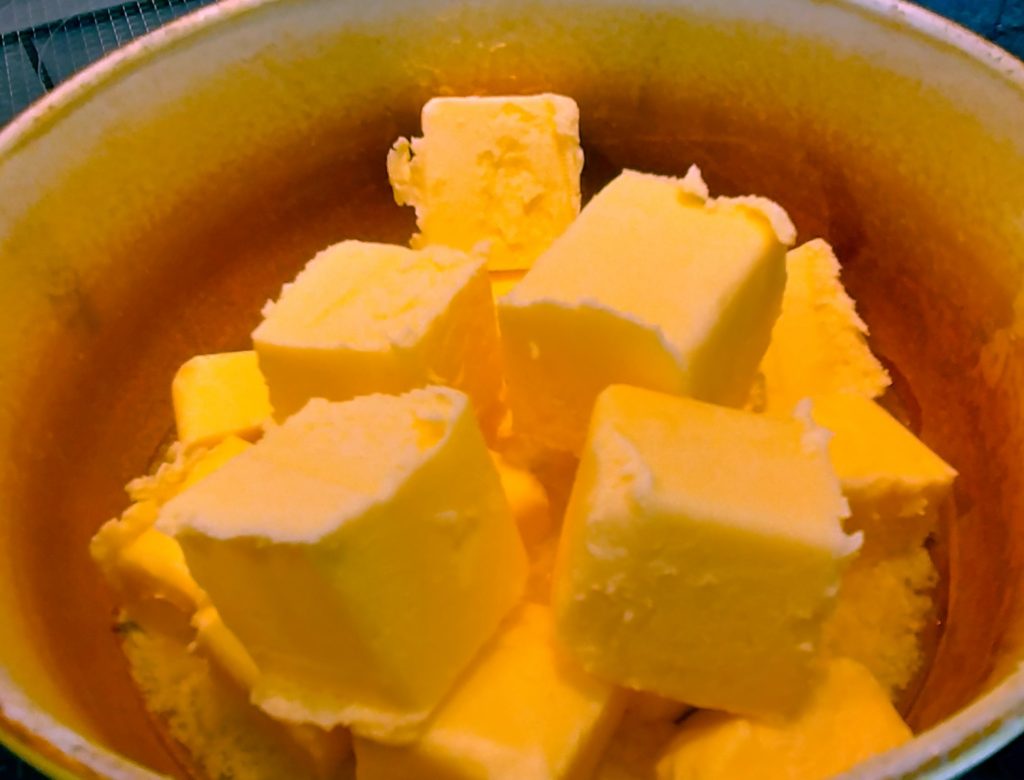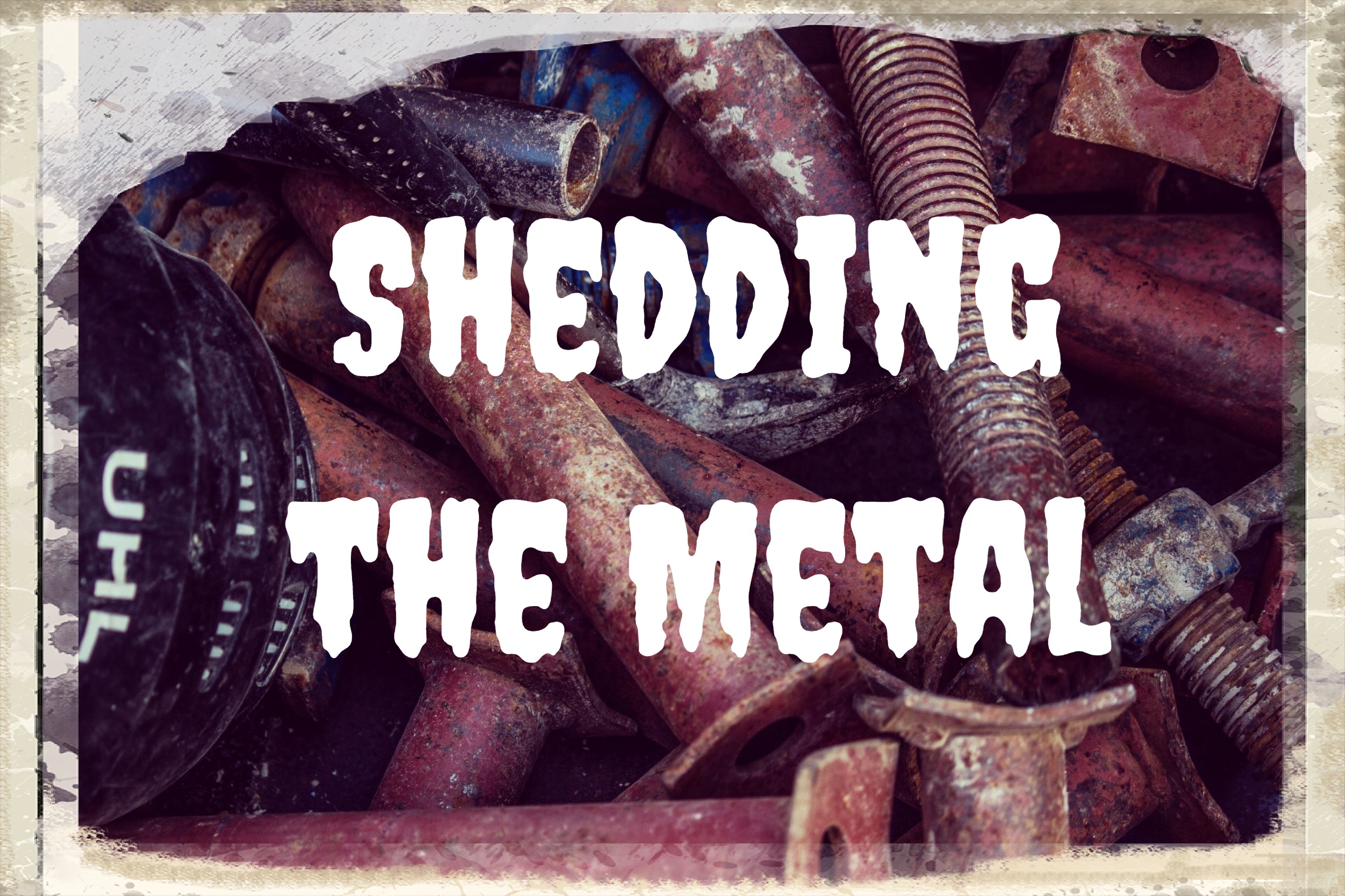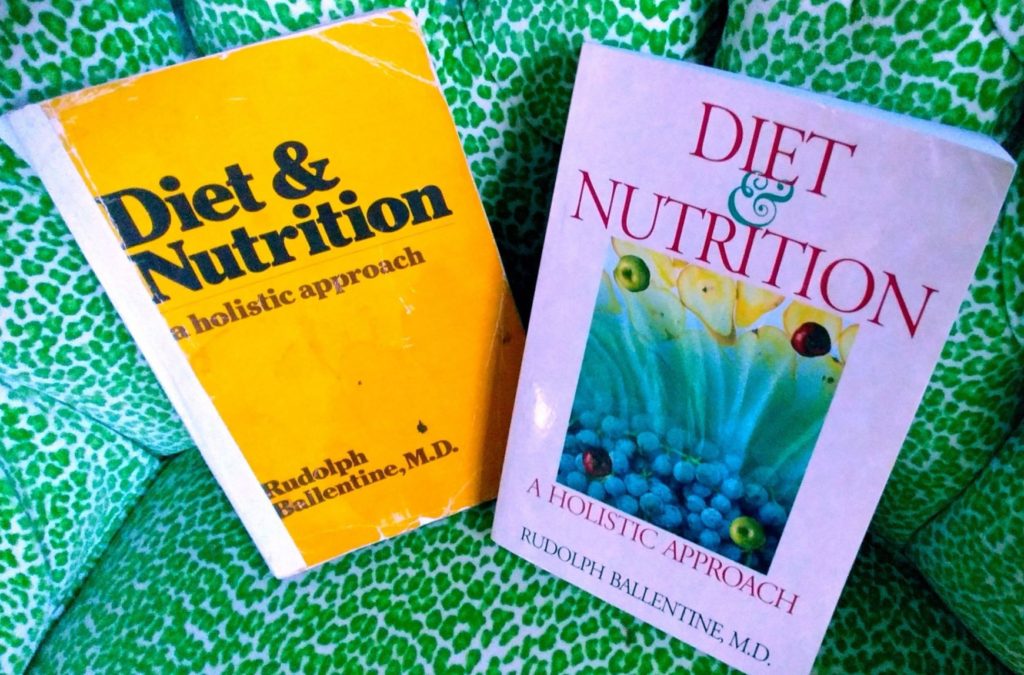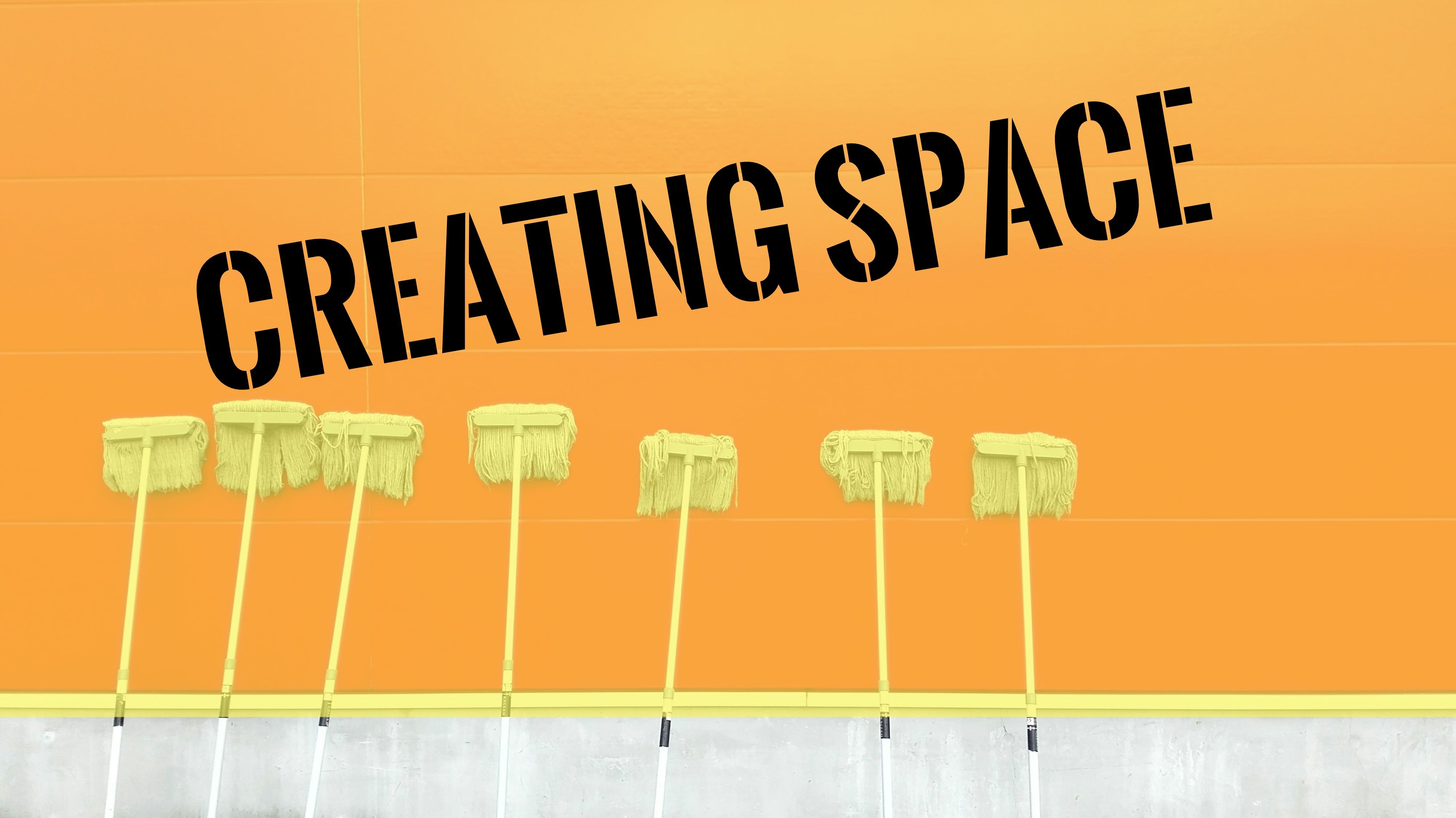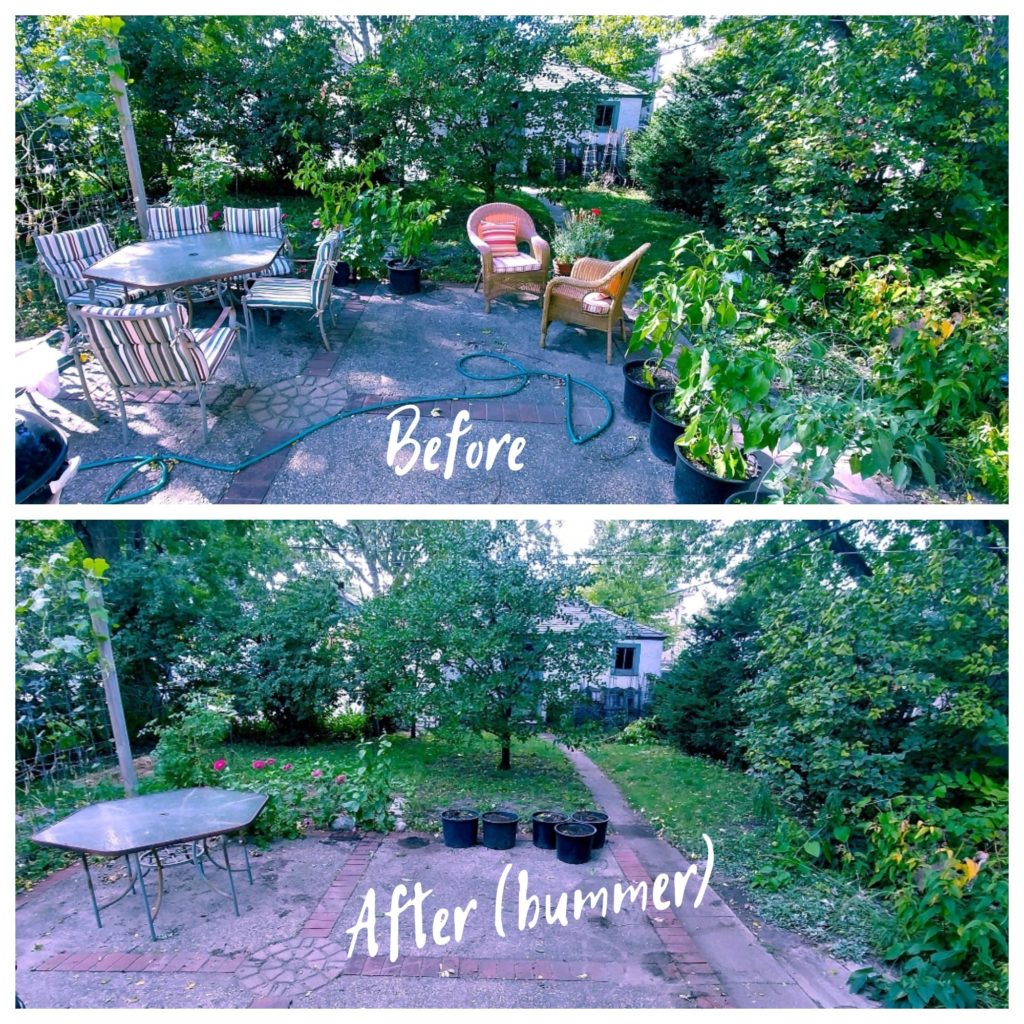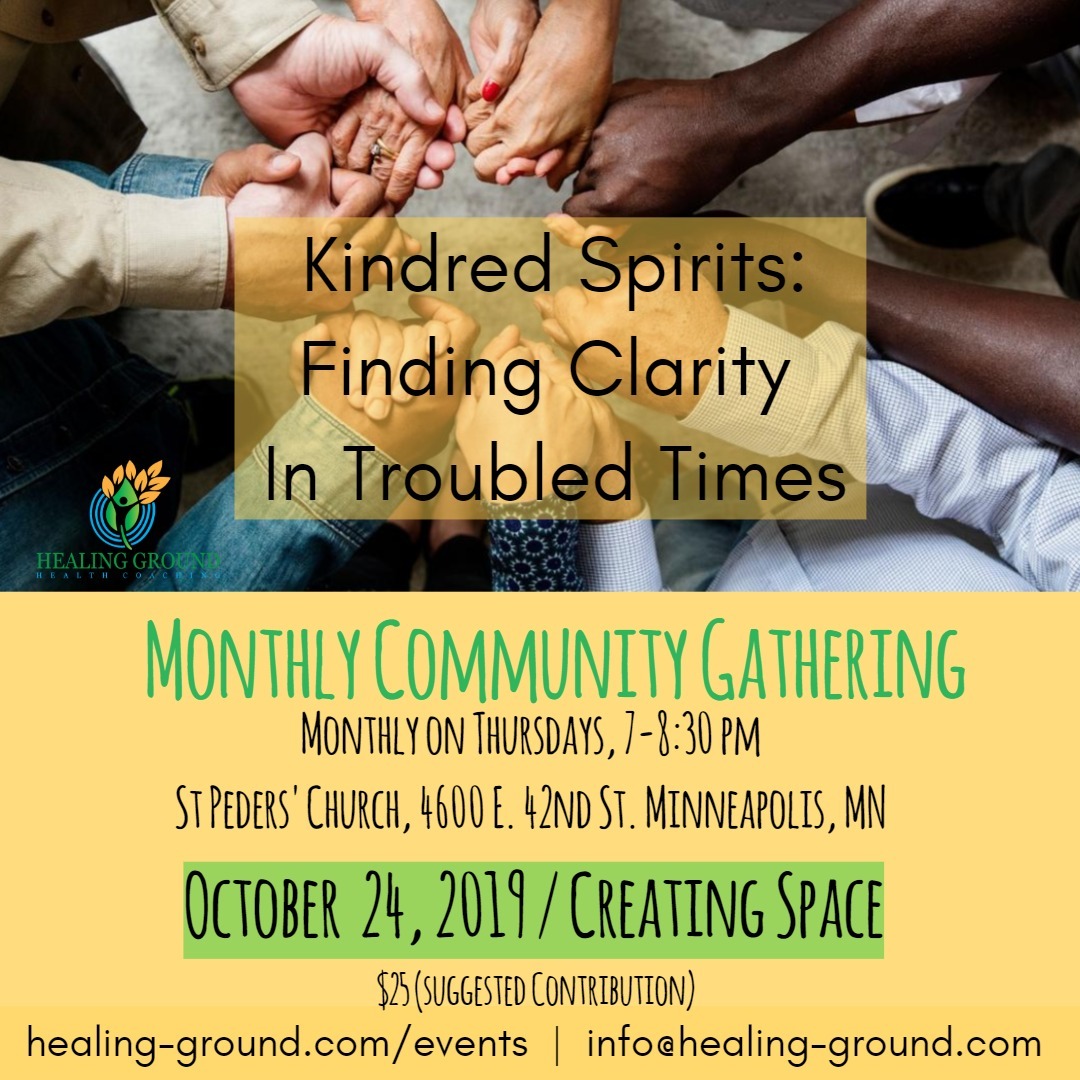The next stage of my fall cleansing is the Kitchari cleanse. This is an Ayurvedic style digestive cleanse designed to balance the mind body and spirit. It involves eating Kitchari (and ONLY Kitchari), a mung-bean, rice, and ghee based dish daily for the length of the cleanse (seven days, in my case), performing self-message and oliation daily (Abhyanga), soaking the body in a very hot ginger bath nightly, and spending time shifting your gaze inward. Truth be told, it’s a time of self examination.
The Kitchari cleanse is a three stage process. Step one is preparation, step two is the active phase, and step three is rejuvenation. It’s easy to skimp on phases one and three and just jump in and out of phase two. In our culture it’s the natural thing to do–just dive in. But over time, I’ve begun to see the folly in that strategy (if you can call it a strategy). Not properly preparing in advance for the cleanse means you’re wasting valuable cleansing time going through preparation. You can’t skip that part.
Peparation
When I prepare for seasonal cleanses I choose the time for the cleanse well in advance. I clear my calendar as much as I am able. I don’t want to put super strenuous activities on my agenda during a cleanse. Cleansing time is a time for inward focus and contemplation.
As cleansing time nears, I find it good to slow down and begin to contemplate my intentions for the cleanse. In other words, I want to clarify for myself why I’m taking the time to do this.
Then there are the logistical considerations. At minimum I want to stock the Kitchari Ingredients and the oils I will need for the Abhyanga. I also need the ginger bath supplies. While it isn’t absolutely necessary to use, I also like to supplement the Kitchari with an herbal medicated ghee preparation and have other specialty oils on hand. You also want to consider what special foods you may want for rejuvenation and, if not eaten fresh, purchase them in advance so you have them when you need them.
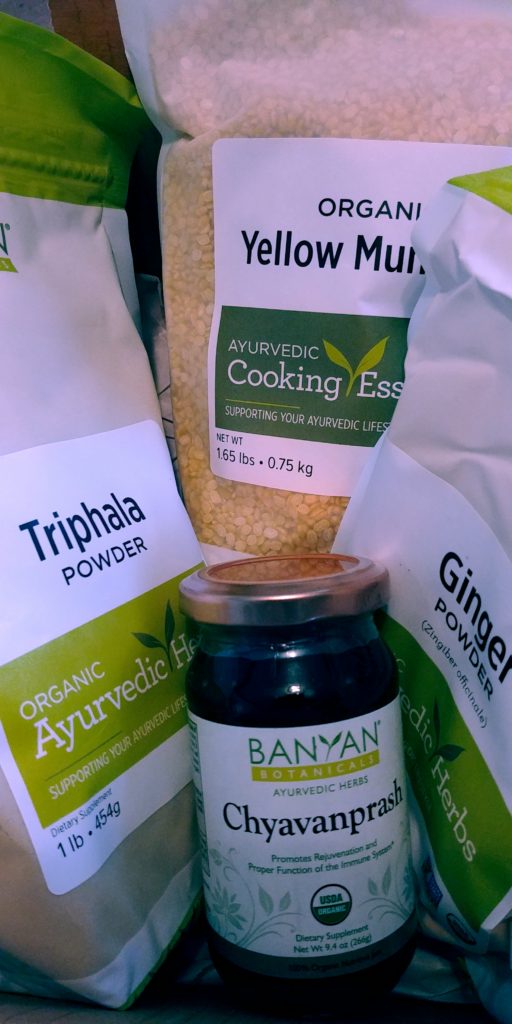
Ingredients
The Kitchari is simple to make and has only a few basic ingredients. It is a porridge like stew made up of split mung beans, basmati rice, ghee, and spices (both ground and whole): cumin, colander, fennel, black pepper and turmeric. Some recipes include brown mustard seed and occasionally I add black cumin. I also add a little salt. You can also add vegetables if you want. I’ll be adding carrots, onions, and spinach to my first batch. I was considering substituting millet for rice this time around but I think I’ve changed my mind for reasons that I may explain in a post far in the future.
There are as many Kitchari recipes on the web as there are people making it. I usually start with the one published by Savastha Ayurveda. Her recipe uses more items than some and I don’t always use all of them and sometimes I add different vegetables. You can also substitute red lentils for the mung beans, although I like mung beans for their high protein content. I also cook my Kitchari longer than the recipe calls for. Everything in the stew needs to be well cooked–soft. Yes, even the carrots (if you’re using them) and especially the rice. The mung beans dissolve and are the basis of the stew. This soft quality of the Kitchari is one of the reasons it is so cleansing–it is very easy for your system to digest.
It’s a good idea to buy these ingredients in advance because you’ll be cooking with them every day for a week. The split mung beans and spices I purchase online from an excellent Ayurvedic retailer, Banyan Botanicals out of Albuquerque New Mexico. I like them because their products are clean and fresh and certified organic. You can find split mung beans at a number of local Indian grocery stores but the beans are typically not organic and are of questionable age. I can tell the Banyan products are fresh by how they cook up and by how they smell (and look). Penzy’s is another great option for spices. I don’t think they are certified organic but they are obviously fresh and well sourced. Penzy’s is by all accounts a terrific company.
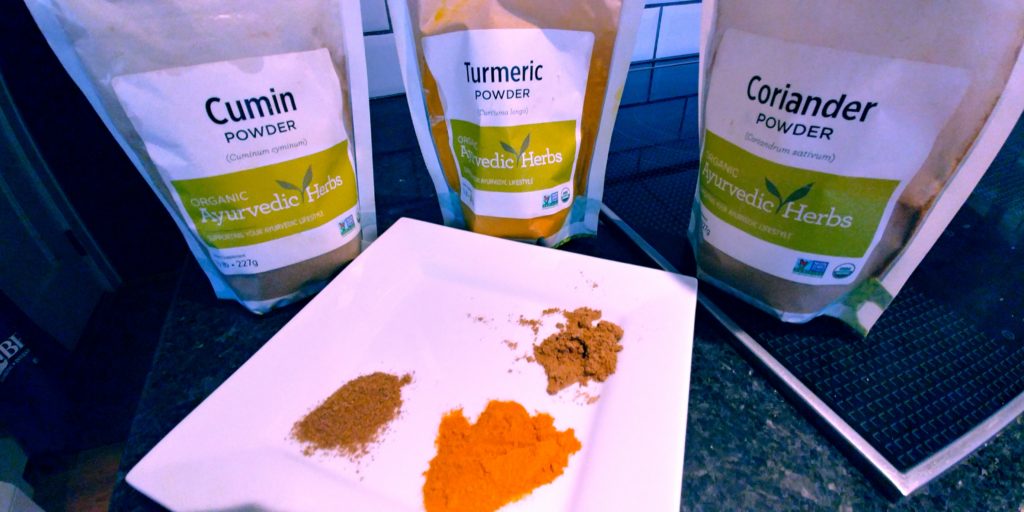
The basic oils I use for Abhyanga are organic sesame and organic coconut (sesame when I want a warming oil and coconut when I want cooling). I also use specialty oils based on my dosha (more about that at an undetermined date). Here’s a good video showing how to do the oliation/massage. Fyi: unlike in the video, it can get messy. Unless you have a gigantic spa-like bathroom like in the video, I suggest you clear things out of your bathing area that will just get in the way. You’ll be soaking, massaging, and oliating in that room and the fewer unnecessary things you have in that room, the easier it will be to clean up.
In addition I use nasal oils and am trying a new ear oil. The coconut oil I purchase at Seward Coop in Minneapolis. You can purchase plain organic sesame oil at the coop too but I buy the sesame and specialty oils from either Banyan or another excellent Ayurvedic vendor, Savastha Ayurveda (out of Boulder CO).
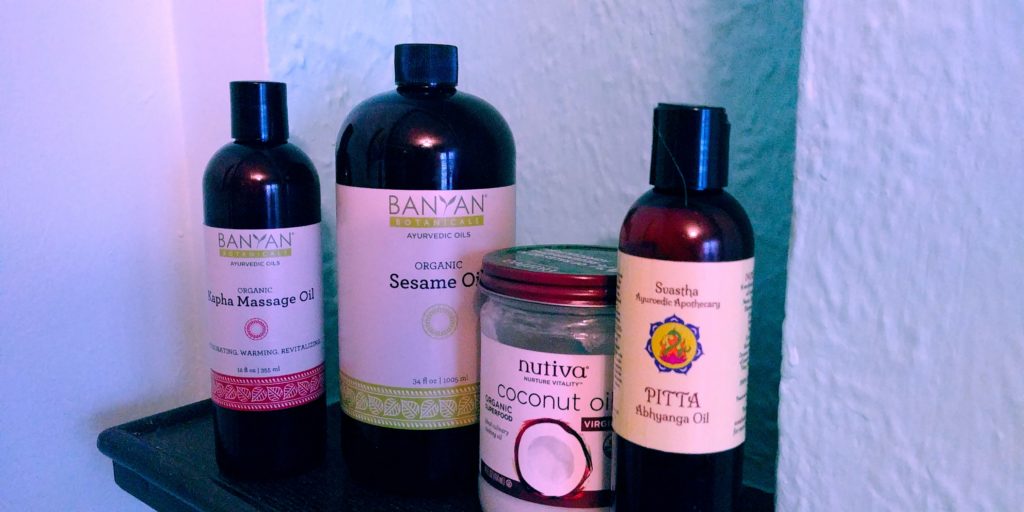
Oleation Oils (seseme and coconut can also be used for cooking). Two specialty oils (far left and far right) are formulated for people of particular constitutions. The one on the left is warming and the right one is cooling. 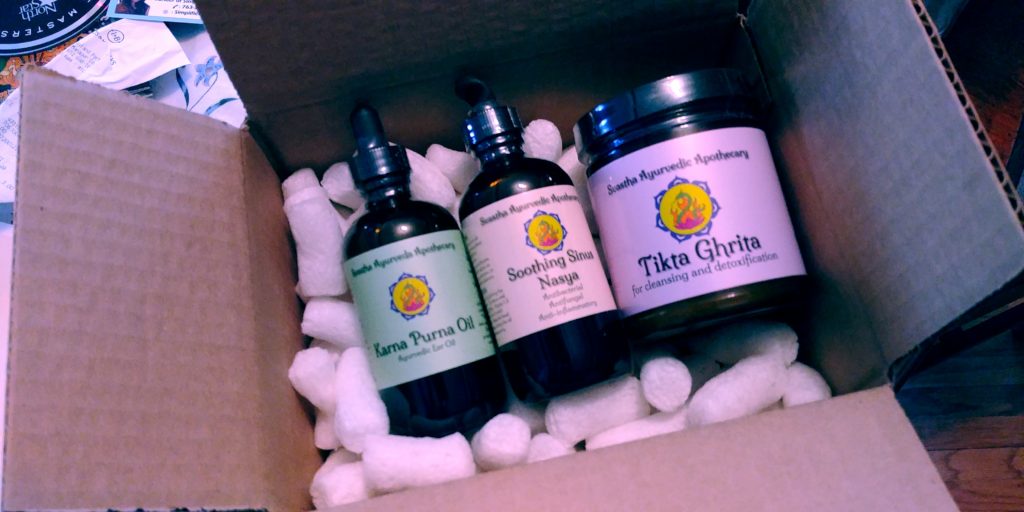
Specialty Oils. 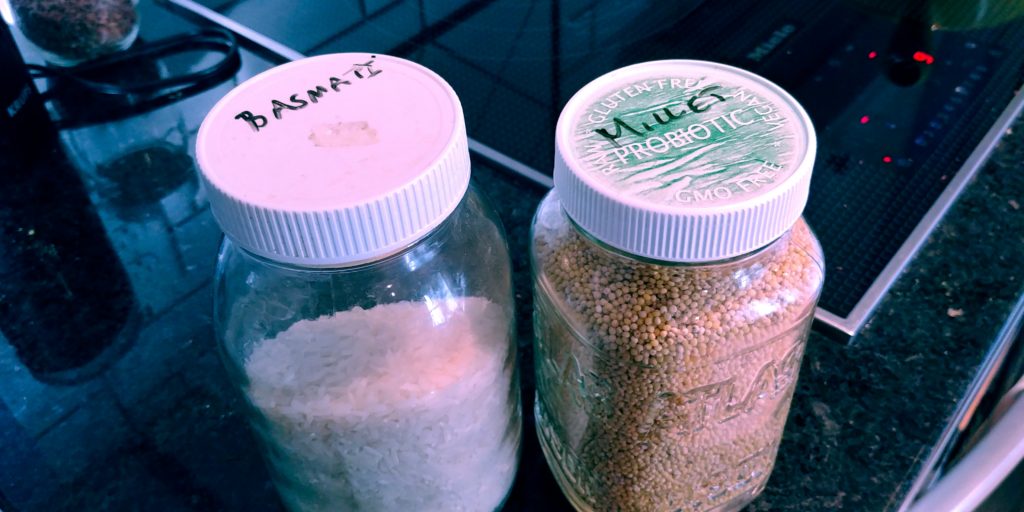
Basmati rice and millet.
Make sure you have easy access to a lot of towels. You also want to put fresh, but possibly older, linens on your bed knowing that they will be absorbing oil (even though you soak after your Abhyanga, your body will still be oily, including your hair). I have a special set of sheets I use only during cleansing time. That way I don’t ruin all my sheets. FYI, you clean the oil off your body in the morning with either a hot shower or soak. You’ll be washing your hair a lot that week.
Rejuvenation supplies
It’s a good idea to have the rejuvenation supplies on hand too. Rejuvenation is a phase of introducing foods and activities that nourish and replenish us. Ghee (more about that in a few) is a great rejuvenation food. I also like to use Triphala tea in the rejuvenation phase (and beyond). It’s a powder made up three ground dried berries that have many replenishing properties. Triphala is replenishing to the blood and aids in reducing inflammation. It is also great for digestion and elimination. I’m trying a new product this year: Chyavanprash which is an herbal jam. Here’s a picture of the ingredients. I haven’t given enough thought to the rejuvenation phase in the past so this is my attempt at becoming more aware of it. We’ll see how it goes.
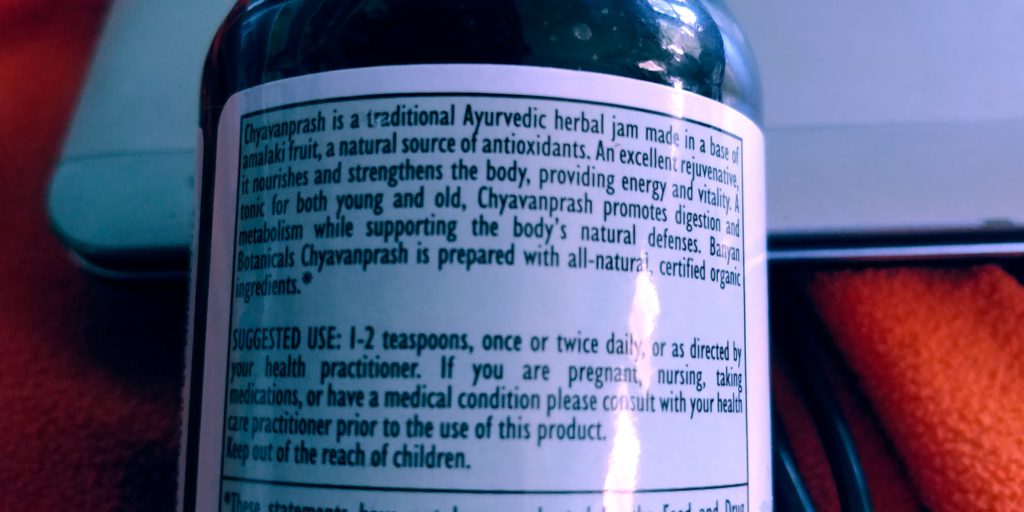
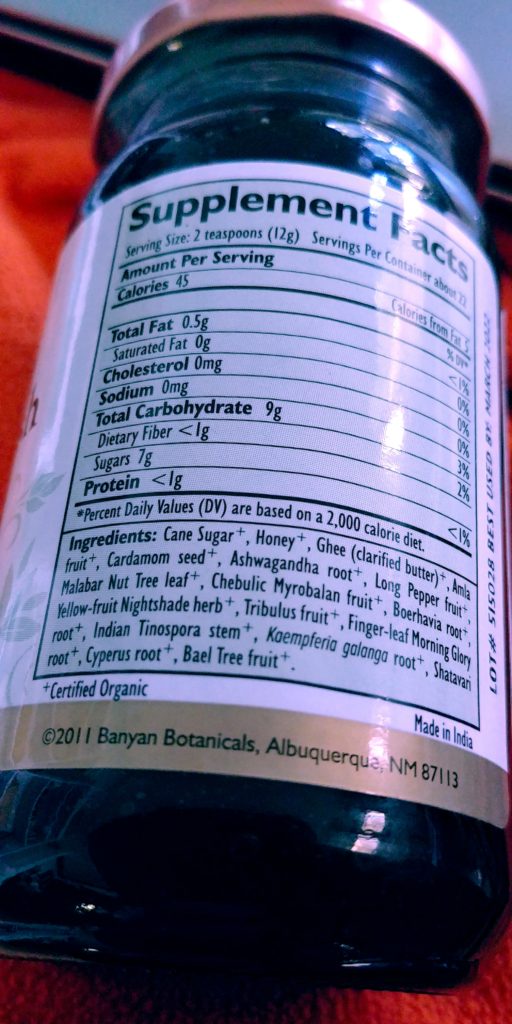
So, those are the supplies I am stocking for this Kitchari Cleanse. I must say that photographing and blogging about all these items provides quite a different experience than I’ve had in the past. It’s a little difficult to fix my gaze inward while also trying to reflect things outwardly. It produces a push and pull feeling. We’ll see how far I get in reporting how it’s going. You’ll probably hear more about this.
The best part: Ghee!
The final, and very important item is ghee. Ghee is boiled butter and provides the oil for the Kitchari. It is also often taken on its own during a cleanse. You can purchase ghee but is is expensive and not made in your own kitchen. I learned to make ghee from Ruolph Ballentine’s book, Diet and Nutrition. If you are interested in how ghee is made, you can watch my first attempt at cooking while video taping below. Cooking ghee one-handed is quite an experience!
